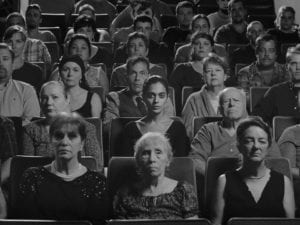Spectre comes from the early 17th century Latin word for spectrum, which further traces to specere, or, to look. The etymology denotes definitions from “colours, an extreme between two points” to “a ghostly, yet ever-present vision.” Now, the word appears in the title of Richard Mosse’s (b. 1980) urgent new film, Broken Spectre, which depicts the destruction and devastation of the Amazon – an area which spans 6.7 million km2 and is often referred to as the “lungs of the earth.” The 20-metre panorama makes its world premiere at a poignant moment: the rainforest is rapidly approaching a point of no return. In the film, now on view at the National Gallery of Victoria, the artist, along with Australian composer Ben Frost and American cinematographer Trevor Tweeten, asks us to look anew at the environmental and social disaster. It pairs stark footage with accounts from Indigenous communities – imploring global viewers to see the impending fate of the biome, whilst highlighting the impact of inaction in the face of crisis.
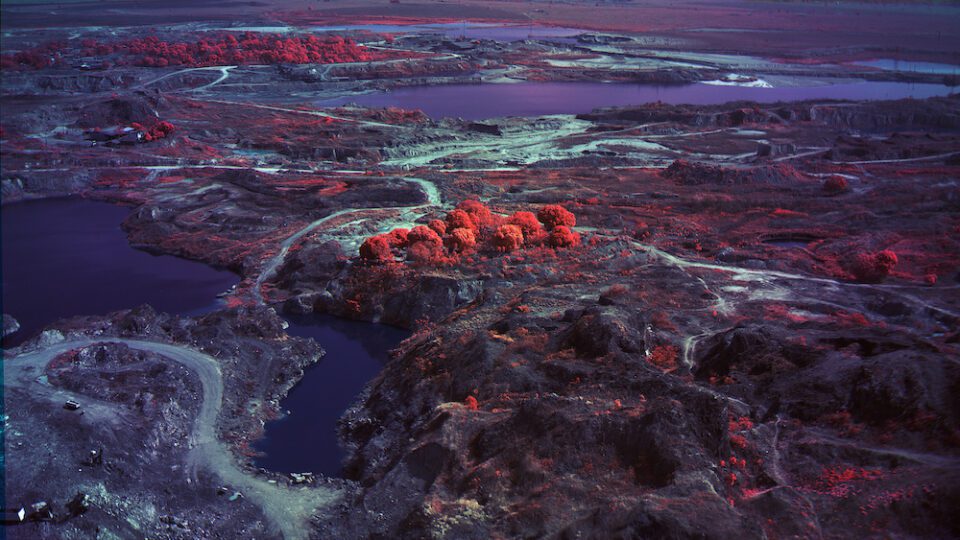
A: You began documenting human rights atrocities associated with the land with Infra (2010-2015), before turning your lens to the ecological crisis with Ultra (2019-2020). What inspired this shift in focus?
RM: I have spent the past ten years working with scientific imaging technologies to defamiliarise subjects and mediate complex human narratives. Ultra was my first attempt to describe the non-human. Eccentric nocturnal portraits of plants and insects demonstrate the connections between lifeforms in the rainforest – a topography that is simultaneously over and under-represented. Although this change in subject might seem like a clean break, all of my work is united in an examination of the lived environment. This has since evolved into the more ambitious, immersive film, Broken Spectre.
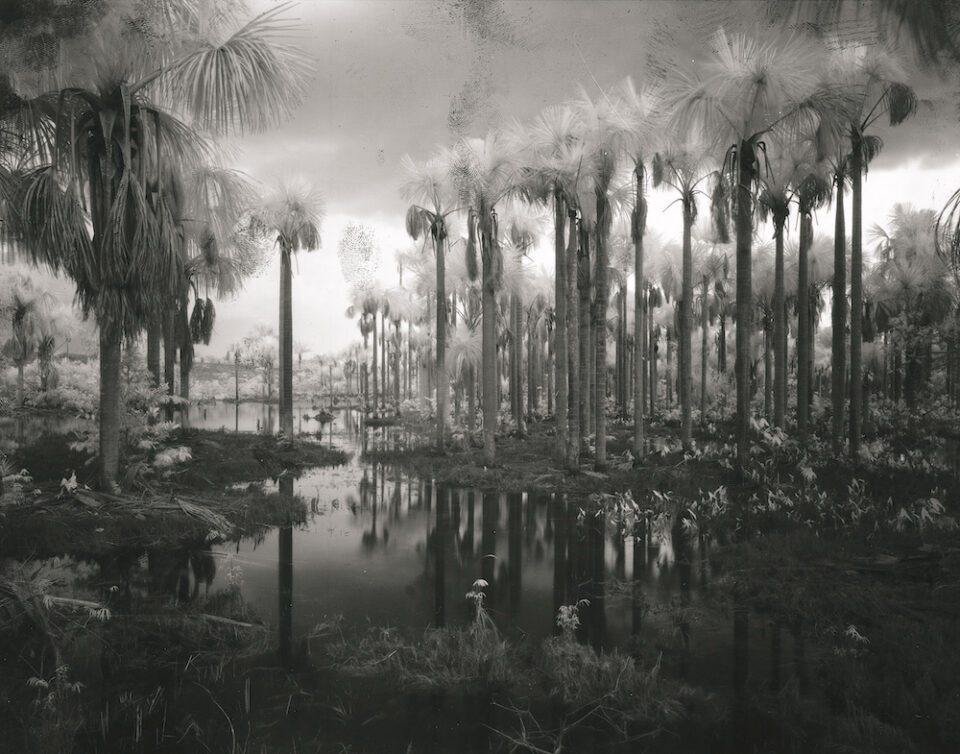
A: Your new moving image work, Broken Spectre, presents desolate landscapes in vivid colour, offering a renewed depiction of the Amazon with scientific imagery technologies. Why is this approach effective in presenting the effect of deforestation?
RM: I’ve used a range of media, so it shifts gears in quite violent ways. A custom-made multispectral video camera mounted to a helicopter captures the systematic clearing of land for agriculture. Satellite cameras reveal dieback with unsettling clarity. It was entirely homemade and processed by hand in my studio; you can see the fingerprints of the climate emergency pressed into the film’s heat sensitive emulsion.
The false tonal palette, created from wavelengths between visible and infrared light, differentiates between healthy and dying plants. Tropical skies turn black and the forest glows white like embers. As an artist, I am engaging with both the visual’s aesthetic and scientific qualities. I feel the imagery is successful if it can echo ubiquitous photographs of burning trees that we’ve already seen and become inured to. Viewers can still appreciate the power of the image without interpreting the conclusions of the data.
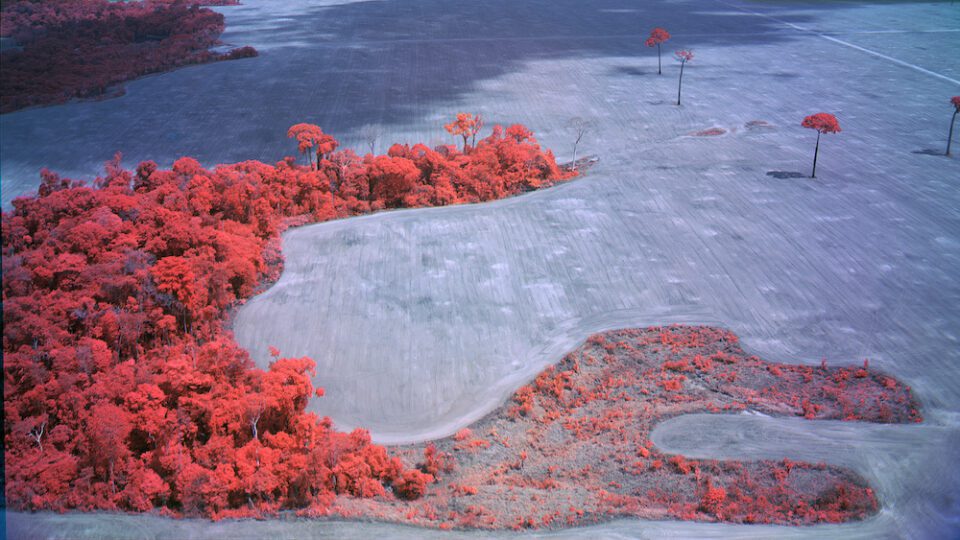
A: The rainforest is mapped on a macro and micro level: featuring satellite imagery, portraits of the indigenous Yanomami community and zoomed in depictions of plants. How does it differ from other representations?
RM: Broken Spectre incorporates elements of global cinematic styles, from the tonality of Italian neo-Realism to the Cinéma vérité of French filmmaker Jean Rouch (1917-2004). It also pays homage to specific movies, including Mikhail Kalatozov’s (1903-1973) anthology drama Soy Cuba or Werner Herzog’s (b. 1942) documentary Lessons of Darkness. These stylistic leaps are not always easy on the viewer. What emerges is a kind of chimera rather than a single narrative. Yet every frame is testimonial footage of the Amazon’s destruction, including processes of ecological catastrophe and environmental crimes. I guess it is that ambiguity – the tension between art and documentary, science and the imagination, beauty and tragedy – that might make it feel new.
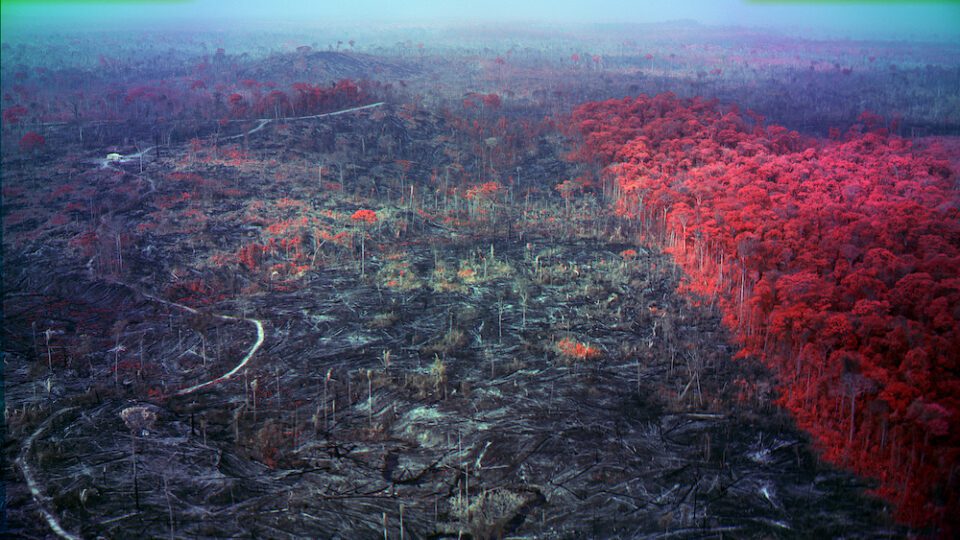
A: In 2021, The Guardian hosted a masterclass on reframing eco-anxiety – reflecting widespread feelings of hopelessness towards the climate emergency. How does Broken Spectre aid accessibility to the climate conversation?
RM: The Amazon seems so far from home. Yet, we are very complicit in its destruction. On a day-to-day basis, we enjoy the “fruits” of deforestation, from eating cheap burgers or sitting on leather seats in luxury cars. It was very challenging to highlight the impact of these actions.
To do so, we used the iconography of Westerns, from the widescreen aesthetic to black and white stock footage and direct references to Ennio Morricone’s (1928-2020) Spaghetti Western soundtracks. In some scenes, Cowboys (vaqueiros) on horseback herd cattle through the burnt jungle. These weirdly incongruous, almost Ballardian depictions are at the very heart of Broken Spectre. The genre felt like a strong nexus to foreground some of these ideas, helping the viewer relate and leaving them hanging in an uncanny space. The familiarity perhaps also forces us to dwell upon the fact that we have already burned and cut down many forests across Europe and America. History repeats itself.

Elsewhere, the film’s main character is a young woman who lives in Yanomami Territory on the Brazilian border with Venezuela. Adneia makes a searing seven-minute-long speech to the camera. She confronts me, the photographer, and by extension, the viewer. Once you’ve heard her words, you can’t unhear them. She is searching for help for her community, sharing her family’s experience at the mercy of illegal goldminers armed with automatic weapons. The next scene cuts to the ATL (Acampamento Terra Livre or Free Land Camp), a protest rally of Indigenous communities in the country’s capital, Brasilia. Her questions are answered, in a way. We can make change through activism, solidarity and resistance.
I don’t think many people fully understand the vast scale and systematic organisation of the situation on the ground. I do not want the piece to tell you what to think or what to do. I want the viewer to sit with that eco-anxiety, to feel the ambiguity of the situation, but more importantly, to understand what is unfolding.
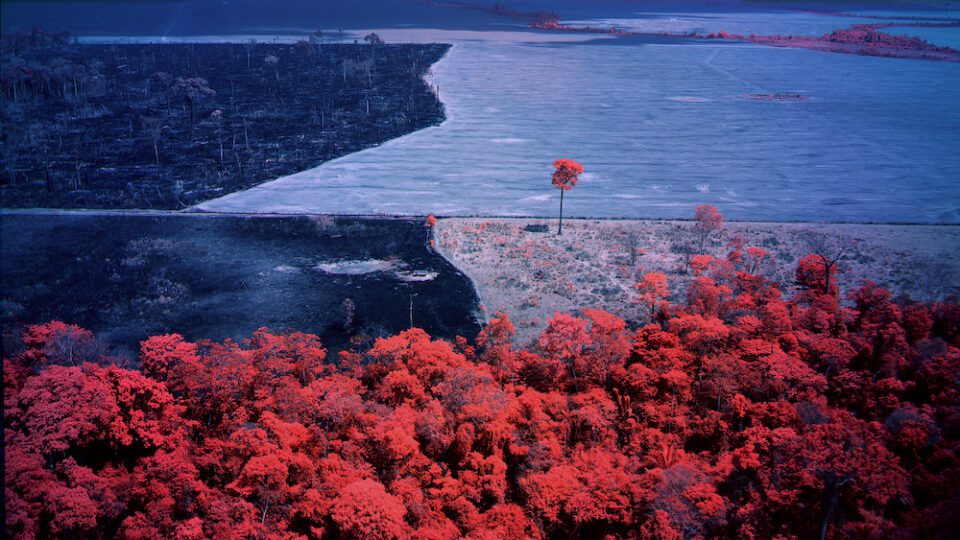
A: The world premiere of Broken Spectre is at the National Gallery of Victoria, a site with deep ties to Indigenous communities. In 2019-2020, Australia also experienced unprecedented wildfires, partly due to prolonged droughts. Does the location of the premiere add another layer of meaning to the work?
RM: I’m interested to see how an Australian audience will receive this work, given their proximity to extremely dangerous bushfires that move with alarming speed. Many visitors will have experienced these first-hand or will know people who have. Yet, those fires are very different to the ones in the Amazon. Even during the dry season, the rainforest is inherently damp and therefore requires plenty of manpower to burn and clear. The very real harassment and terrorising of Indigenous communities in the Brazilian Amazon, endorsed by President Jair Bolsonaro’s (b. 1955) government, may also feel close to the bone.
Richard Mosse: Broken Spectre | National Gallery of Victoria until 23 April 2023
Interviewer: Saffron Ward
Image Credits:
1. Richard Mosse, Broken Spectre, 2022 (still) Courtesy of the artist and Jack Shainman Gallery, New York.
2. Richard Mosse, Broken Spectre, 2022 (still) Courtesy of the artist and Jack Shainman Gallery, New York.
3. Richard Mosse, Domesticated Palms, Amazonas, 2020 Courtesy of the artist and Jack Shainman Gallery, New York
4. Richard Mosse, Broken Spectre, 2022 (still) Courtesy of the artist and Jack Shainman Gallery, New York.
5. Richard Mosse, Broken Spectre, 2022 (still) Courtesy of the artist and Jack Shainman Gallery, New York.
6. Richard Mosse, Mass Burn, Rondônia, 2021 Courtesy of the artist and Jack Shainman Gallery, New York.
7. Richard Mosse Broken Spectre 2022 (still )Courtesy of the artist and Jack Shainman Gallery, New York.




